Have you ever wondered how Samsung refrigerator’s ice maker knows when to stop producing ice? Is it magic or technology? Well, the answer is neither.
The Samsung ice maker has a built-in sensor that detects when the ice bin is full and stops producing ice.
In this article, we will discuss the working mechanism of Samsung’s ice maker and explore how it detects when to stop making ice. We will also provide tips on how to troubleshoot if your ice maker is not working correctly.
So, let’s dive in and learn more from the subject matter experts at Samsung.
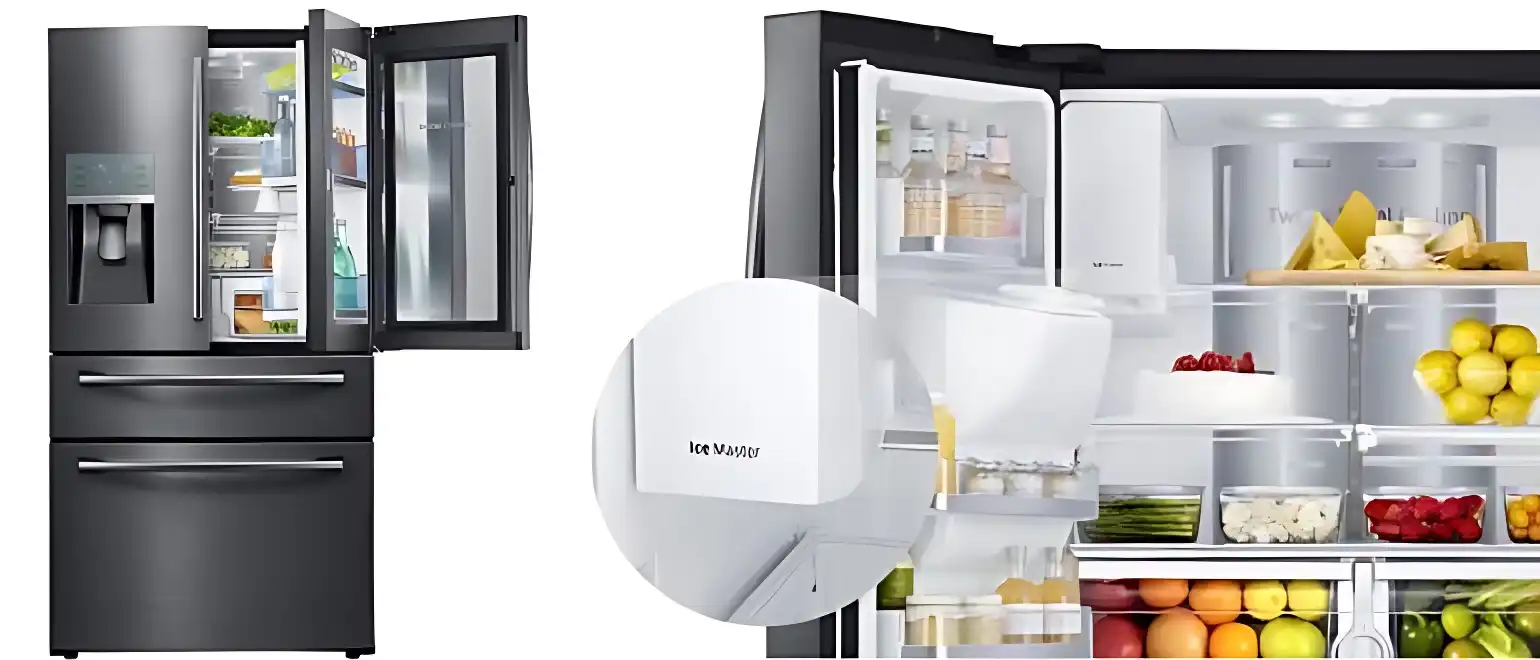
How Does a Samsung Ice Maker Know When to Stop?
Below are some effective ways that aware the ice maker about the right time to stop:
Understand the Functioning of the Ice Maker
Your Samsung ice maker works tirelessly to provide you with a constant supply of ice. But how does it know when to stop producing ice?
The key lies in its built-in mechanism that senses when the ice storage bin reaches capacity. Let’s dive into the details.
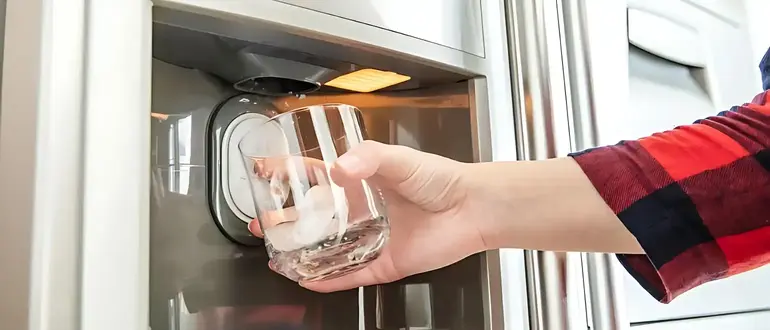
Meet the Ice Maker’s Sensor Arm
The primary component responsible for controlling the ice production in your Samsung refrigerator is the ice maker’s sensor arm.
This thin, flat arm is designed to move up and down as ice accumulates in the bin. The sensor arm’s position determines whether or not the ice maker should continue producing ice.
Watch the Sensor Arm in Action
When the ice bin is empty or has little ice, the sensor arm stays in a lowered position. This position signals the ice maker that it needs to produce more ice.
As the ice begins to pile up in the storage bin, the ice cubes gradually push the sensor arm upward.
Once the ice level reaches a certain point, the sensor arm moves into an elevated position, indicating that the bin is full.
Experience the Automatic Pause
Upon reaching the elevated position, the sensor arm sends a signal to the ice maker to pause ice production.
This pause remains in effect until you use some ice causing the level in the bin to drop. As the ice level decreases, the sensor arm lowers back down, resuming ice production.
Appreciate the Clever Design
The sensor arm’s ingenious design ensures that your Samsung ice maker never overflows with ice. This built-in mechanism allows the appliance to maintain a consistent ice supply without any manual intervention.
So, next time you reach for a cold drink, take a moment to appreciate the clever technology that keeps your ice bin filled just right.
Troubleshooting Common Samsung Ice Maker Issues: Tips and Tricks
If you own a Samsung refrigerator with an ice maker, you may have experienced some common issues that can be frustrating to deal with.
Below, we will provide you with some tips and tricks to troubleshoot these issues and get your ice maker working properly again:
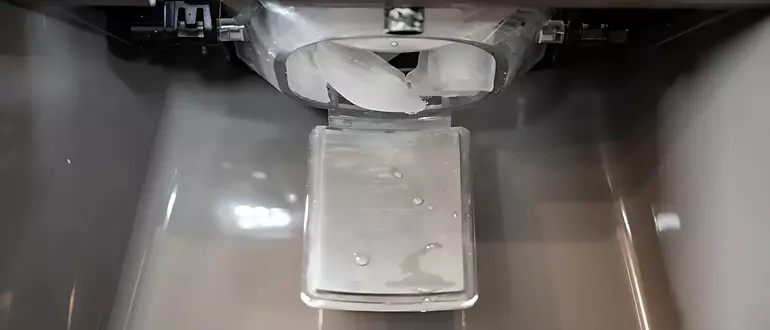
No Ice Production
If your Samsung refrigerator’s ice maker is not producing any ice at all, there could be a few potential causes. The first thing to check is the water supply.
Make sure that the water line is connected properly and that the water valve is turned on. You may also want to check the water filter to ensure that it is not clogged or needs to be replaced.
If the water supply seems to be working correctly, the next step is to check the ice maker itself.
Ensure that the ice maker is turned on and that the arm or switch that controls it is in the correct position.
If the ice maker is turned on and functioning properly, you may need to call a technician to diagnose and fix the issue.
Slow Ice Production
If your Samsung refrigerator’s ice maker is producing ice, but at a slower rate than usual, there are a few potential causes.
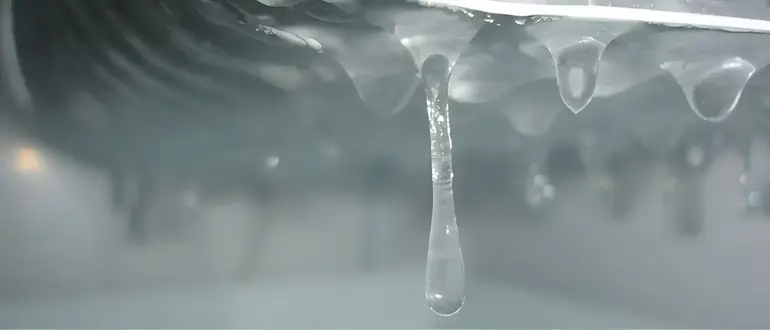
The first thing to check is the temperature of the freezer. If the temperature is set too high, the ice maker may not be able to produce ice as quickly as it should.
Ensure that the freezer is set to the correct temperature according to your owner’s manual. Another potential cause of slow ice production is a clogged water filter.
If the filter is dirty or clogged, it can reduce the water flow to the ice maker, resulting in slower ice production. Try replacing the water filter and see if that improves the ice production rate.
Ice with a Strange Taste or Odor
If your Samsung refrigerator’s ice has a strange taste or odor, the first thing to check is the water filter. If the filter is dirty or needs to be replaced.
it can affect the taste and odor of the ice. Replace the water filter and see if the issue is resolved.
Another potential cause of strange–tasting or odorous ice is a dirty ice bin. If the ice bin is dirty or has been in use for a long time, it can affect the taste and odor of the ice.
Try cleaning the ice bin thoroughly with warm soapy water and see if that improves the taste and odor of the ice.
Proper Maintenance and Cleaning: Ensuring Optimal Performance
If you own a Samsung refrigerator with an ice maker, you may be wondering how the machine knows when to stop making ice. The answer lies in a small sensor located in the ice maker that detects when the ice bin is full.
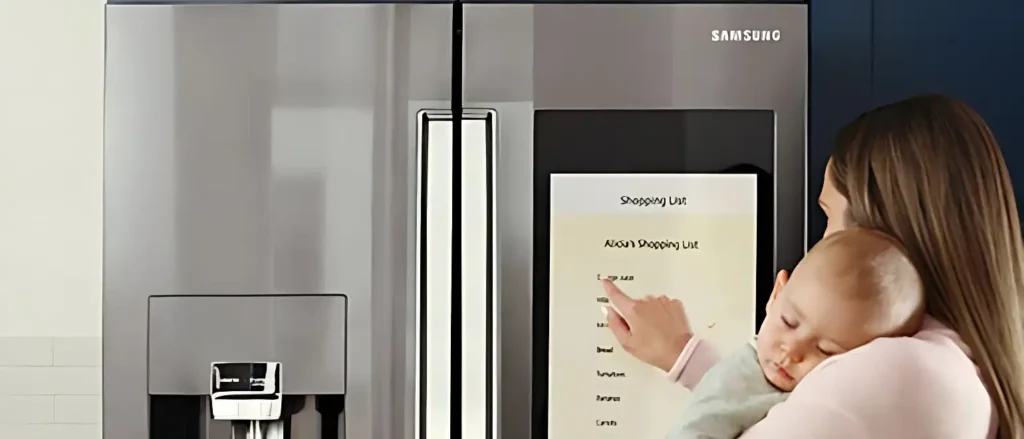
However, proper maintenance and cleaning of the ice maker are essential to ensure.
that it functions optimally and accurately detects when to stop making ice.
Regularly Clean the Ice Maker
To ensure that your Samsung ice maker functions correctly, you should clean it regularly. Over time, dirt, debris, and mineral deposits can accumulate.
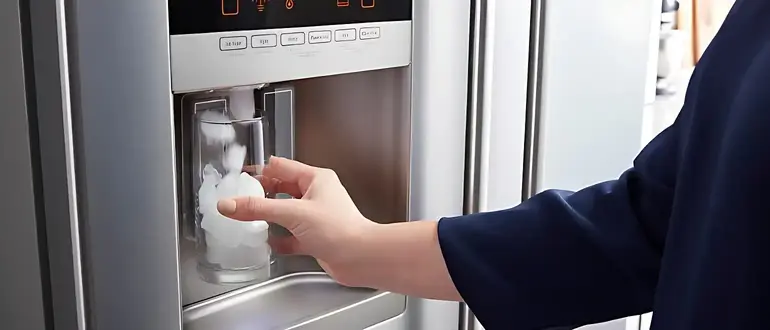
in the machine, leading to clogs and malfunctioning parts. To clean the ice maker, start by turning off the water supply to the refrigerator.
Then, remove the ice bin and any remaining ice. Use a soft-bristled brush or toothbrush to gently scrub the inside of the ice maker.
including the ice mold and the water supply tube. Finally, rinse the ice maker with clean water and dry it thoroughly before replacing the ice bin.
Check the Water Supply
Another important factor in ensuring the optimal performance of your Samsung ice maker is to check the water supply. If the water pressure is too low.
it can lead to slow ice production or even a malfunctioning ice maker. Make sure the water supply valve is fully open and that the water pressure is between 20 and 125 psi.
If you notice any leaks or damage to the water supply line, you should replace it immediately.
Replace the Water Filter
A clogged or old water filter can also affect the performance of your Samsung ice maker.
Over time, the water filter can become clogged with debris and mineral deposits, leading to reduced water flow and poor ice production. Samsung recommends replacing the water filter every six months or as needed, depending on usage.
Address Any Malfunctions
If you notice that your Samsung ice maker is not functioning correctly, it is essential to address the issue promptly. Common malfunctions include slow ice production.
No ice production, and the ice maker not detecting when the ice bin is full. If you experience any of these issues, try troubleshooting the problem by checking the water supply, cleaning the ice maker, and replacing the water filter. If the problem persists, contact a qualified technician for assistance.
FAQs
What Kind Of Sensor Does The Samsung Ice Maker Use?
The Samsung ice maker uses an infrared sensor to detect when the ice bin is full. This sensor sends a beam of infrared light across the top of the ice bin, and when the bin is full, the light is reflected to the sensor, triggering the ice maker to stop producing ice.
Can The Sensor Be Adjusted To Stop Making Ice At A Different Level?
No, the sensor is pre-set by Samsung and cannot be adjusted by the user. However, some Samsung models do offer the option to manually turn off the ice maker if you need to stop making ice before the bin is full.
What Happens If The Sensor Malfunctions?
If the sensor malfunctions, the ice maker may continue to produce ice even when the bin is full, which can cause the ice to overflow and create a mess. If you suspect that your Samsung ice maker’s sensor is not working properly, it’s best to contact Samsung customer service for assistance.
Final Words
To sum up, the Samsung ice maker has a simple yet effective mechanism that uses a sensor to detect the ice bin’s fullness and stop ice production. Understanding how the ice maker works can help you troubleshoot if it’s not working correctly.
So, if you’re a Samsung refrigerator owner and wondering how your ice maker knows when to stop, now you know the answer.
Just keep your ice bin empty, and your ice maker will keep producing ice for you. With Samsung’s innovative technology, making ice has become easier than ever before.
